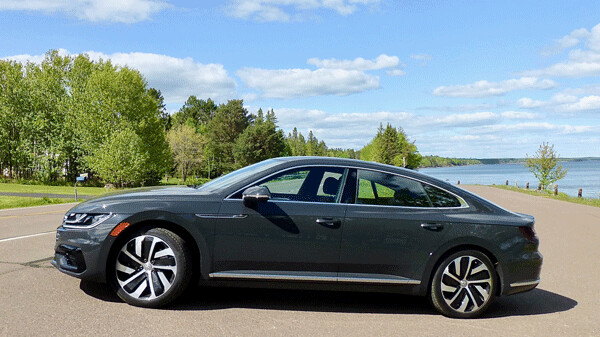Arteon Emerges for All to C-C
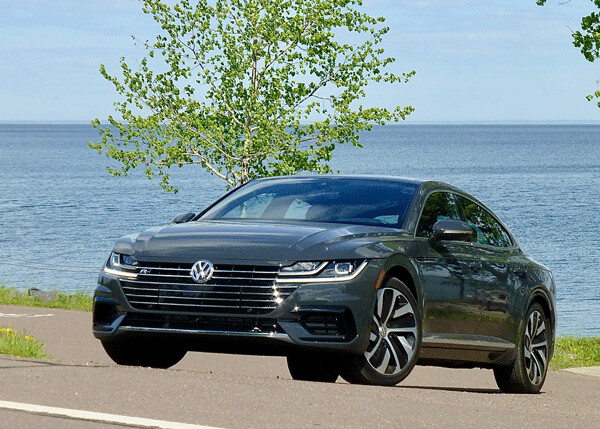
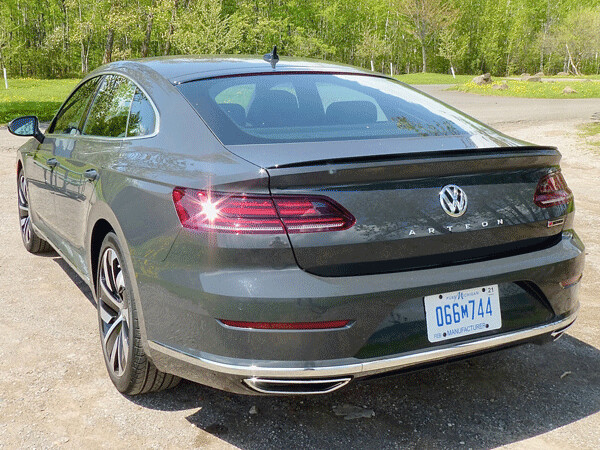
The first time I ever laid eyes on a Volkswagen CC over a decade ago, I was taken by its sleek lines and the look that was almost coupe-like even though it was a 4-door sedan. It had a steeply sloped rear hatch, and it helped initiate the term “4-door coupe” to the automobile world.
The car was based on the Passat, Volkswagen’s high-volume midsize sedan, but with a much sportier demeanor. It never really sold well in the U.S., and with good reason. I can’t recall a single promotion deal or ad campaign to promote it, even though it sold very well in Europe as the sport-luxury upgrade from the Passat. When I heard Volkswagen was going to redesign the CC, I was quite interested to see it.
After being introduced at a couple of auto shows, Volkswagen brought out its all-new sedan, called the Arteon, a couple of months ago, and I recently got one to drive on my favorite Duluth area highways, including the North Shore Drive on Lake Superior. The first one I ever got into was at the MAMA Spring Rally, where it was available for brief drives. When I first saw it, I couldn’t resist a cynical remark.
“That’s a beautiful car,” I said to a VW representative. “It’s so neat that it’s almost as impressive as the CC.”
That didn’t generate much of a chuckle from the VW rep, but I had to make the point. The outgoing CC was a beautiful sedan, and the new Arteon, which replaces it, is a quite-beautiful sedan. Some may like it better. VW hopes that customers will seek it out in greater numbers.
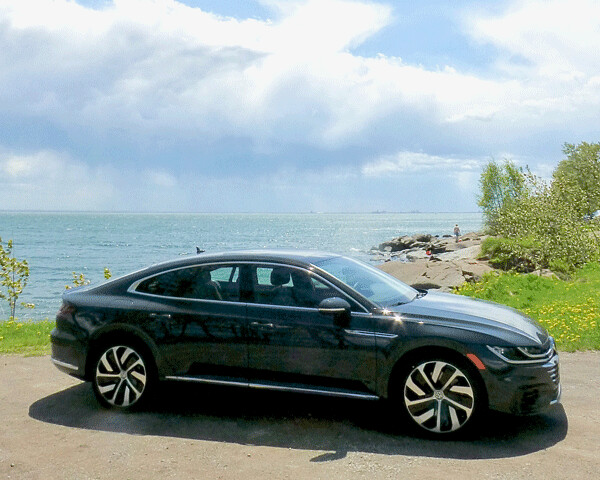
Just about every company makes a mid to full size “4-door-coupe” these days, and to my eye, that might be where VW made a slight mistake. The new Arteon looks good in silhouette, but at a glance, you might have to ask what it is, because its shape resembles the shape of certain Honda Accord, Toyota Camry, Ford Fusion, Hyundai Sonata, Kia Optima and Mazda6 models. The outgoing CC definitely had a more distinctive look.
One place the new Arteon has a clear edge in from the front, where it has a grille and forward-merging lines that combine luxury and sportiness.
Driving the Arteon also is a treat, because the test car was the top of the line SEL Premium R-Line, which means the top SEL adds premium features and also adds the spunk of the R-Line performance styling upgrades. It also has VW’s 4Motion all-wheel drive system, which adds a little weight and a lot of stability and utility.
Some companies are abandoning their sedans, but Volkswagen is adding to its non-SUV plans, with a newly redone Jetta and Passat, and a soon-to-come Golf, and now the Arteon. Having tried the Phaeton as a luxury sedan without success in the U.S., the Arteon might be the right car for the right time in the industry. At some point, the U.S. craze for SUVs might subside, and rising fuel prices could turn some demand back to more economical sedans, especially those with SUV-like all-wheel-drive.
The basic SE comes with front-wheel drive but probably has considerable go-power with the same 2.0-liter Turbo on the lighter arrangement. That starts at just under $37,000. Move up to the SEL and you get more features, and the tested SEL Premium starts at just under $46,000 and comes standard with the 4Motion that is optional on lesser models.
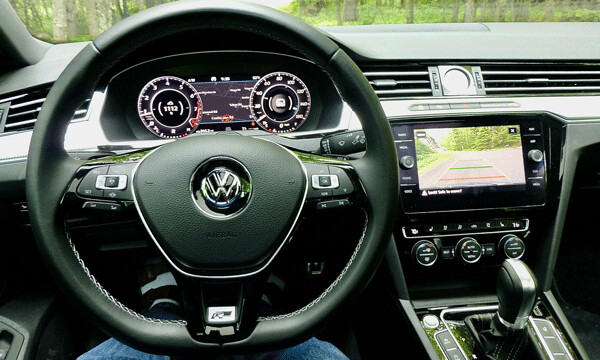
My test car came in at $47,205, which means virtually everything was standard, including the Urano Gray paint, the black leather interior and the 4Motion and 8-speed transmission. For drivability, there is a driving mode selector that is acted out by some clever videos on the nav screen; a stop-start system; adaptive chassis control; electronic differential lock, variable electronic power steering; antilock brakes, anti-slip and engine brake assist; stability control; rear view camera with overhead view camera and park distance control; park assist front and rear; adaptive cruise control; blind sport monitor with lane keeping assist; 700 watt audio system with a subwoofer; adaptive cruise control smartphone integration and navigation and infotainment system — in short, a laundry list of all the contemporary electronic driving enhancements.
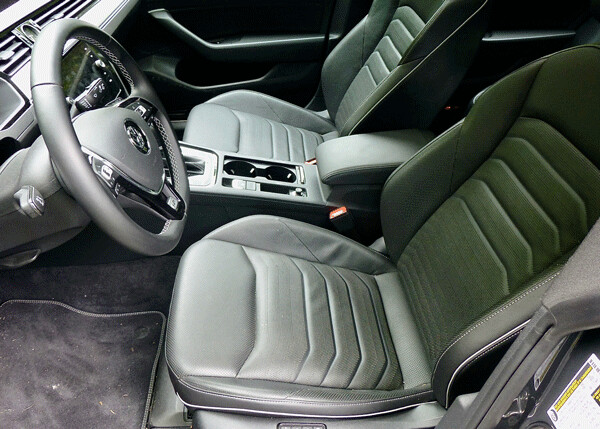
At 191.4 inches in overall length, the Arteon is a couple inches longer than the CC it replaces, but, surprisingly, is actually shorter than the Passat it is based on. Inside, the bucket seats are sumptuously covered with Nappa leather, and they are both heated and ventilated to cool occupants. Plus, standard equipment includes a power massage function that can give you a stimulating back massage to make those long trips seem a lot shorter, and more comfortable. The passenger seat is heated and cooled too, and rear seats also are heated, but only the driver gets the massage feature.
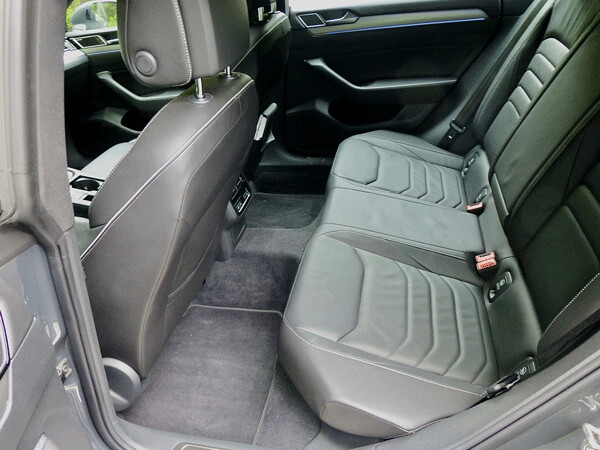
Rear-seat riders will be amazed at how much legroom they have, and everybody will be surprised when you open the hatch and display 27 cubic feet of luggage space.
That ubiquitous 2.0-liter 4-cylinder got its annual tweak from VW engineers, and it delivers about 35 percent more power than what the CC got, with direct fuel injection and the turbo conspiring to rise to 268 horsepower at 5,500 RPMs, with corresponding torque peaking at 258 foot-pounds at a very low 1,950 RPMs. Remember, it’s torque that provides the off-the-line scat-power, and peaking that low means you can zip from 0-60 in about 6 seconds. For a 3,835-pound sedan, that’s quick.
The Aisin automatic is an 8-speed, and operates manually with paddle shifters. The EPA estimates 23 miles per gallon city and 27 highway, and I got up to 32 mpg combined when I resisted the temptation to hammer it.
When it comes to performance, VW’s standard is the GTI version of the Golf, or the recently tested Golf R, but the Arteon has a lot of the same powertrain equipment, so you can drive it the way you might a GTI and not be disappointed.
As my week with the Arteon went on, the subtlety of its styling grew on me, provided with the obvious boost from the car’s performance and handling. The solid feel of the car from the ground up is only aided by the 4Motion’s stability.
The total package also made me appreciate renaming the car, because whatever Arteon means, or wherever it came from, is allows us to accept it as an excellent near-luxury sports sedan on its own — without even thinking back to its CC predecessor.
